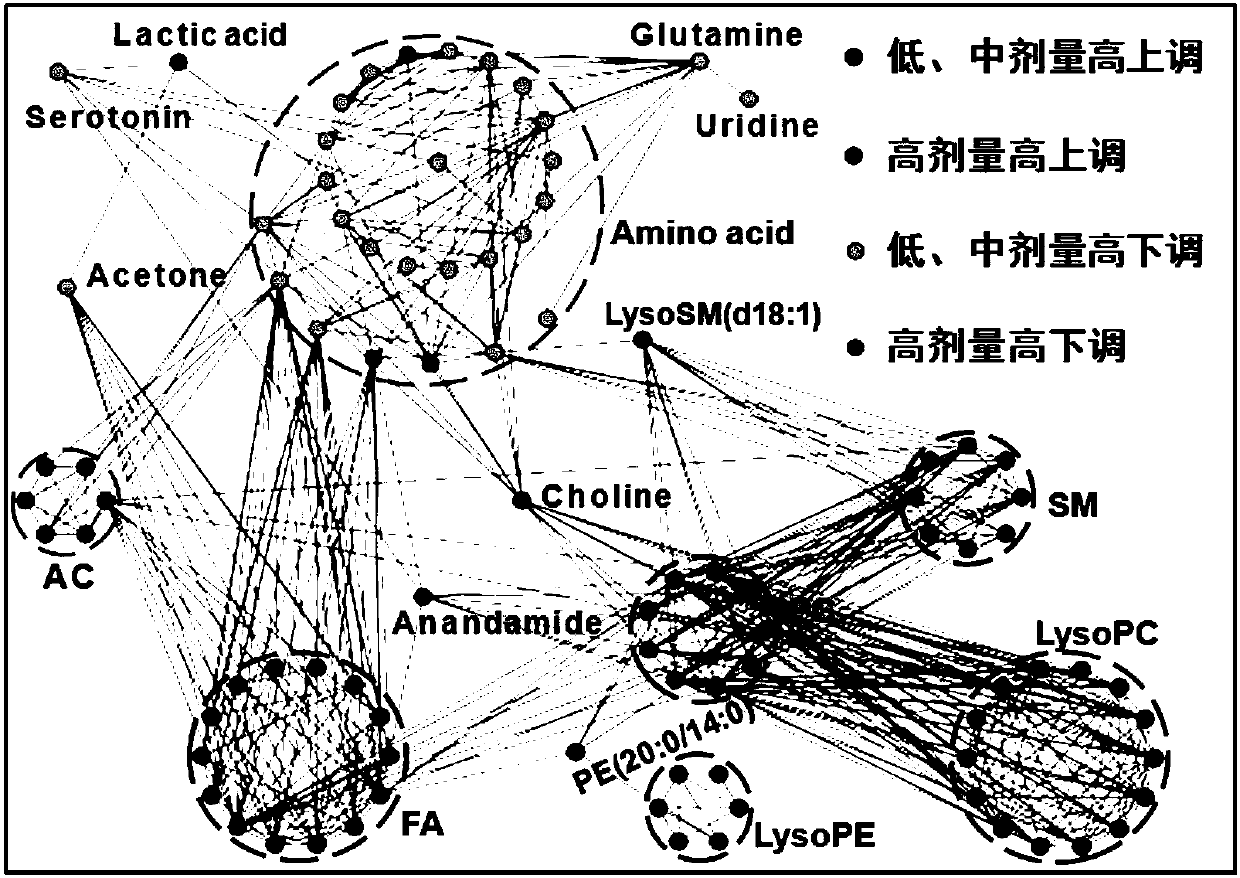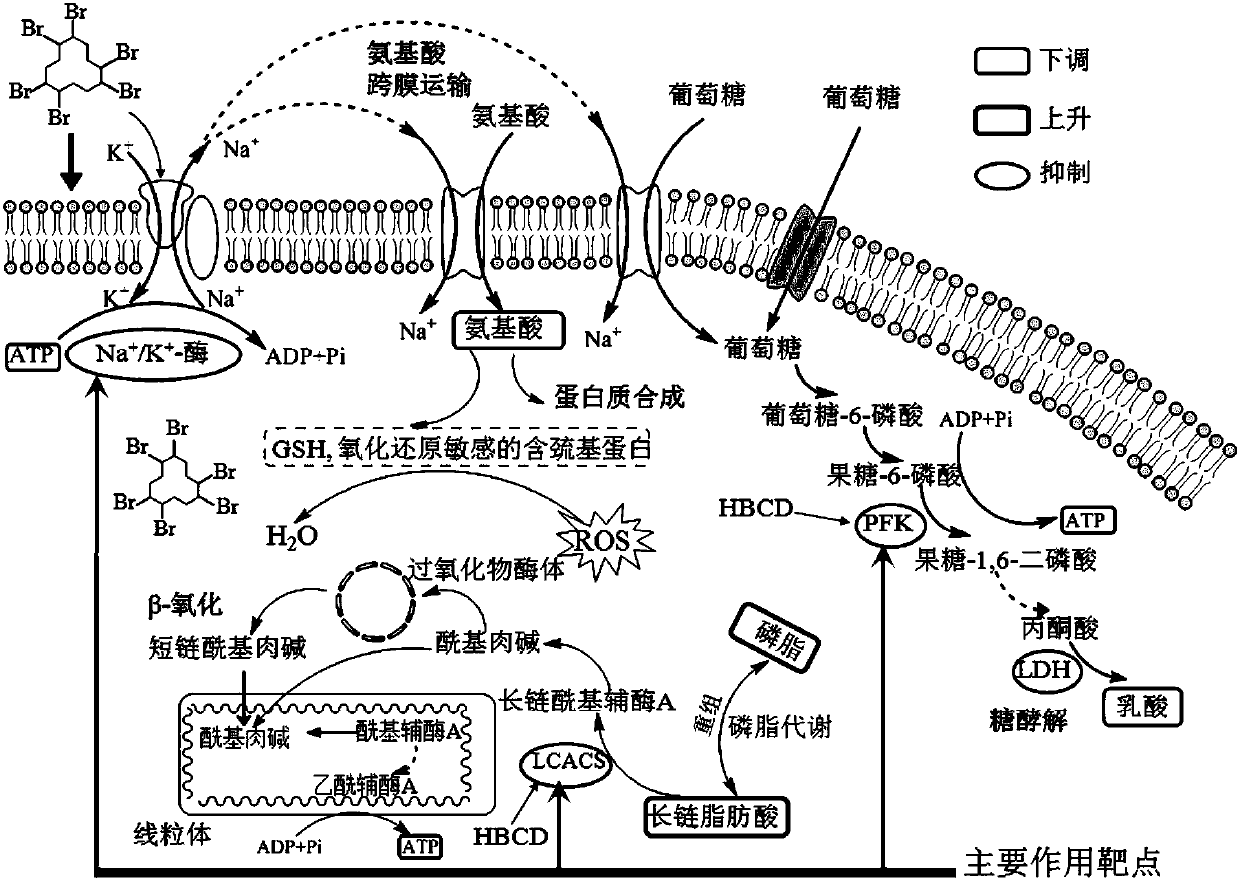Metabonomics technology-based persistent organic pollutant cytotoxicity action mechanism research method
A technology for organic pollutants and cytotoxicity, applied in the field of molecular biology-based evaluation, it can solve the problems of low throughput, resource consumption, and low sensitivity of toxicity testing, and achieve rapid detection, easy operation, and good repeatability.
- Summary
- Abstract
- Description
- Claims
- Application Information
AI Technical Summary
Problems solved by technology
Method used
Image
Examples
Embodiment 1
[0030] HepG2 cells growing in the logarithmic phase were seeded into six-well plates at a cell density of 3×10 5 cells / well, the volume of culture medium in each well of the six-well plate is 2.5mL; culture in the six-well plate for 24-48 hours, when the cells cover about 80% of the area covered by the culture medium on the well plate, expose the cells with pollutants After 24 hours, samples of cells and extracellular culture fluid were collected. The culture medium is high-sugar DMEM of GIBCO, containing 4500mg / l glucose, containing 10% (v / v) of fetal bovine serum and 1% (v / v) of penicillin-streptomycin; the conditions for culturing in the incubator are 37°C, 5% (v / v) CO in air 2 Expose with commercial hexabromocyclododecane, that is, when the cells are covered with about 80% of the area covered by the culture solution on the orifice plate, the original culture solution is discarded, and each hole is added with DMSO containing 0.05% (v / v), 2.5 mL of culture solution contain...
Embodiment 2
[0032] The liquid-liquid extraction method extracts small molecular metabolites in the intracellular and extracellular culture medium. The extraction is divided into two steps: the first step is to collect the extracellular culture medium in each well of the six-well plate into a separate centrifuge tube, and then quench it with liquid nitrogen. The adherent cells were destroyed, and the extracellular culture medium and the six-well plate were stored at -80°C; then, 1 mL of deionized water was added to each well of the cells, and the cells were ultrasonically disrupted in an ice-water bath for 5 minutes to obtain a broken suspension. The broken suspensions in the wells were placed in separate centrifuge tubes; take 200 μL extracellular culture medium into a new centrifuge tube, and freeze-dry together with the centrifuge tube containing the broken cell suspension; the second step, after freeze-drying Add 500 μL extract solution (80% methanol / water, containing six internal stand...
Embodiment 3
[0034] The UHPLC / Q-Trap MS analysis method was established for quantitative analysis of intracellular and extracellular metabolites. Due to the different molecular properties of metabolites, it was divided into two scanning modes, positive and negative ions. The chromatographic conditions are as follows. Positive ion mode: ACQUITY UPLC BEH C8 (1.7μm, 2.1×100mm) is used for chromatographic column, mobile phase A is superstored water containing 0.1% (v / v) formic acid, phase B is containing 0.1% formic acid (v / v) of acetonitrile. The mobile phase gradient elution program is: start at 90% A, drop to 60% at 3 minutes, drop to 0% at 15 minutes and maintain for 5 minutes, return to 90% A at 20.1 minutes, and balance for 3 minutes; the flow rate is 0.35mL / min , the column temperature was 50°C, and the injection volume was 10 μL. Negative ion mode: ACQUITY UPLC HSS T3 (1.8μm, 2.1×100mm) for chromatographic column, mobile phase A contains NH 4 HCO 3 5mmol / L ultrapure water, phase B ...
PUM
 Login to View More
Login to View More Abstract
Description
Claims
Application Information
 Login to View More
Login to View More - R&D
- Intellectual Property
- Life Sciences
- Materials
- Tech Scout
- Unparalleled Data Quality
- Higher Quality Content
- 60% Fewer Hallucinations
Browse by: Latest US Patents, China's latest patents, Technical Efficacy Thesaurus, Application Domain, Technology Topic, Popular Technical Reports.
© 2025 PatSnap. All rights reserved.Legal|Privacy policy|Modern Slavery Act Transparency Statement|Sitemap|About US| Contact US: help@patsnap.com


